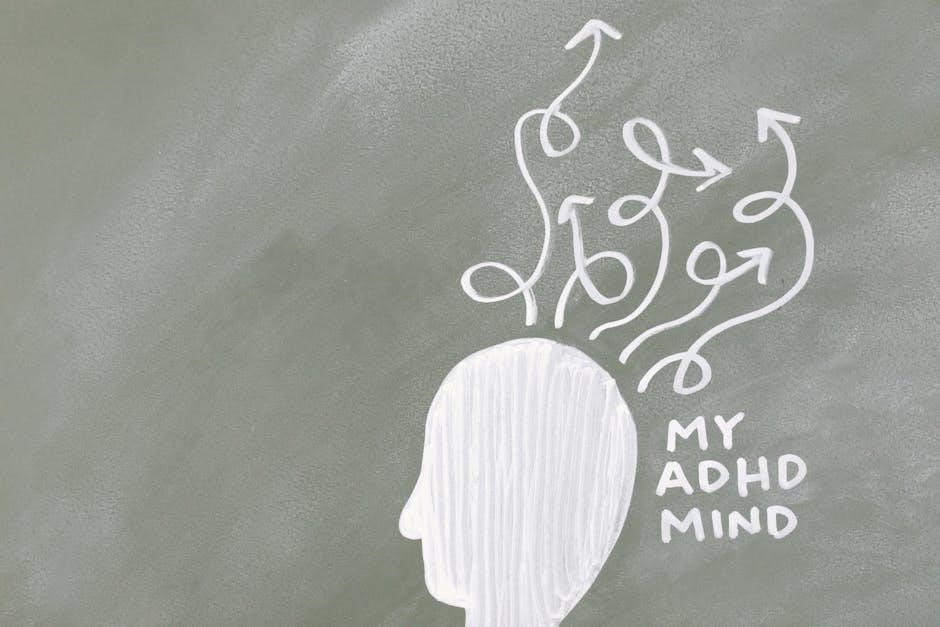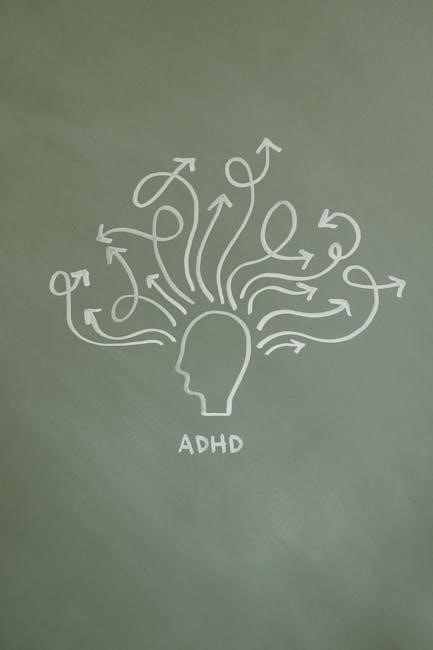Kaplan and Sadock’s Synopsis of Psychiatry, 11th Edition, is a comprehensive textbook that integrates DSM-5 criteria, updated psychopharmacology, and detailed case studies for mental health professionals․
1․1 Overview of the 11th Edition
The 11th edition of Kaplan and Sadock’s Synopsis of Psychiatry provides a comprehensive update, integrating DSM-5 criteria and featuring a thoroughly revised psychopharmacology section․ It includes detailed case studies, new psychotherapeutic techniques, and expanded coverage of child psychiatry and autism spectrum disorder․ The edition also introduces a fully searchable eBook with interactive tools, enhancing accessibility and learning․ With a focus on both behavioral sciences and clinical psychiatry, this edition offers a concise yet detailed overview of the field, making it an indispensable resource for mental health professionals, students, and researchers․
1․2 Importance of the Textbook in Psychiatry
Kaplan and Sadock’s Synopsis of Psychiatry is a cornerstone in psychiatric education and practice․ As the best-selling textbook for over 40 years, it offers a thorough, authoritative overview of the field, making it essential for clinicians, residents, and students․ Its integration of DSM-5 criteria ensures alignment with current diagnostic standards, while its comprehensive coverage of treatments and psychotherapeutic techniques provides practical guidance․ The textbook’s clear and concise presentation, along with its updated content, solidifies its role as a primary resource for mental health professionals, aiding both education and clinical decision-making effectively․
1․3 Authors and Their Contributions
Benjamin J․ Sadock and Virginia A․ Sadock, along with Pedro Ruiz, are the renowned authors of the 11th edition of Kaplan and Sadock’s Synopsis of Psychiatry․ Their contributions have significantly shaped psychiatric education and practice․ Benjamin J․ Sadock is a distinguished psychiatrist and educator, while Virginia A․ Sadock brings expertise in psychotherapy and women’s mental health․ Pedro Ruiz adds depth with his extensive knowledge of cross-cultural psychiatry․ Their collaborative effort ensures the textbook remains a trusted resource, blending clinical insights with educational clarity; Their work has set a high standard for psychiatric education, making the Synopsis indispensable for professionals worldwide․

Key Features of the 11th Edition
The 11th edition integrates DSM-5 criteria, updates psychopharmacology, includes case studies, and introduces new psychotherapeutic techniques, along with a fully searchable eBook and interactive tools for enhanced learning․
2․1 Integration of DSM-5 Criteria
The 11th edition seamlessly integrates the DSM-5 diagnostic criteria, providing clear and concise tables for each psychiatric disorder․ This ensures clinicians and students can quickly access updated diagnostic guidelines, enhancing accuracy in diagnosis and treatment planning․ The inclusion of DSM-5 criteria across all chapters reflects the latest advancements in psychiatric classification, making it an indispensable resource for mental health professionals․ This integration not only aids in understanding diagnostic categories but also facilitates compliance with current clinical standards, ensuring comprehensive and evidence-based patient care․
2․2 Updated Psychopharmacology Section
The 11th edition features a thoroughly updated psychopharmacology section, organized by drug mechanisms of action․ It includes the latest medications and those in development, providing clinicians with essential information on pharmacological interventions․ This section ensures practitioners stay current with evidence-based treatments, aligning with DSM-5 updates․ Detailed discussions on drug efficacy, side effects, and clinical applications make it a invaluable resource for selecting appropriate therapies․ The updated content reflects advancements in neuropsychopharmacology, offering practical insights for managing diverse psychiatric conditions effectively․
2․3 Case Studies and Illustrations
The 11th edition enhances learning with extensive case studies and illustrations, bridging theoretical concepts with real-world applications․ These case studies provide detailed, realistic scenarios of psychiatric conditions, aiding in diagnosis and treatment understanding․ Illustrations, including diagrams and charts, visually explain complex concepts, such as neurobiological mechanisms and treatment pathways․ Together, these tools make the textbook engaging and accessible, helping readers grasp challenging material․ The integration of these elements ensures a comprehensive and practical learning experience, benefiting both students and practicing clinicians in applying psychiatric knowledge effectively․
2․4 New Psychotherapeutic Techniques
The 11th edition introduces the latest psychotherapeutic techniques, offering insights into innovative approaches for treating mental disorders․ These include evidence-based therapies and emerging modalities, such as mindfulness-based interventions and digital therapy tools․ The text emphasizes practical applications, providing clinicians with updated methods to improve patient outcomes․ Detailed descriptions of these techniques enhance the reader’s understanding, ensuring they are well-equipped to integrate new therapies into their practice․ This section reflects the evolving nature of psychiatry and the importance of staying current with effective treatment options․

Structure of the Book
The 11th edition is organized into sections covering behavioral sciences, clinical psychiatry, and neurocognitive disorders, providing a logical flow from foundational concepts to practical applications in patient care․
3․1 Behavioral Sciences Section
The Behavioral Sciences section in Kaplan and Sadock’s Synopsis of Psychiatry, 11th Edition, provides a foundational understanding of the biological, psychological, and social factors influencing mental health․ This section emphasizes the integration of developmental theories, psychology, sociology, and neuroscience to explain the etiology of psychiatric disorders․ It serves as a critical starting point for clinicians and students, offering insights into the complexities of human behavior and the interplay of various factors in mental illness․ The content is structured to enhance comprehension of the biological basis of psychiatry while highlighting the importance of a multidisciplinary approach in diagnosis and treatment planning․
3․2 Clinical Psychiatry Section
The Clinical Psychiatry section in Kaplan and Sadock’s Synopsis of Psychiatry, 11th Edition, offers a detailed exploration of psychiatric disorders, their diagnosis, and evidence-based treatment approaches․ This section is organized to reflect the DSM-5 classification, ensuring clarity and consistency․ It covers a wide range of topics, including mood disorders, schizophrenia, anxiety disorders, and neurocognitive disorders․ The text provides practical insights into pharmacological and psychotherapeutic interventions, supported by case studies and clinical pearls․ This section is invaluable for clinicians, residents, and students, serving as a practical guide for real-world application in mental health care settings․
3․3 Neurocognitive Disorders (DSM-5 Model)
The section on Neurocognitive Disorders in Kaplan and Sadock’s Synopsis of Psychiatry, 11th Edition, is organized according to the DSM-5 model, providing a detailed overview of conditions such as Alzheimer’s disease, vascular dementia, and traumatic brain injury․ It emphasizes diagnostic criteria, clinical presentation, and evidence-based treatments․ The text incorporates updated research on neuroimaging and biomarkers, offering practical insights for clinicians․ This section is particularly useful for understanding the complexities of cognitive impairments and their impact on mental health care, making it a valuable resource for both education and clinical practice․

Diagnostic Criteria and Classification
The 11th edition integrates DSM-5 criteria with detailed diagnostic tables and updated classification categories, providing a clear framework for accurate diagnosis and treatment in clinical practice․
4․1 DSM-5 Diagnostic Tables
The 11th edition includes comprehensive DSM-5 diagnostic tables, providing clear and concise criteria for each psychiatric disorder․ These tables are organized by diagnostic categories, offering a structured approach to understanding symptoms, prevalence, and differential diagnoses․ This feature is particularly useful for clinicians and students, as it simplifies the complex process of diagnosis and ensures adherence to the latest DSM-5 guidelines․ The tables are cross-referenced with clinical discussions, enhancing the learning experience and facilitating quick access to essential diagnostic information․
4․2 Updates in Diagnostic Categories
The 11th edition incorporates updated DSM-5 diagnostic categories, reflecting current understanding of psychiatric disorders․ Changes include renamed disorders, such as hypochondriasis now referred to as illness anxiety disorder, and new conditions like autism spectrum disorder․ Revised criteria for existing disorders enhance diagnostic accuracy and clinical utility․ The updates ensure alignment with contemporary psychiatric practice, providing clinicians with a reliable framework for assessment and treatment․ These revisions maintain the textbook’s reputation as a trusted resource for mental health professionals, offering a detailed and evidence-based approach to diagnosis․

Treatment Methods
The 11th edition details evidence-based pharmacological and psychotherapeutic approaches, aligned with DSM-5 criteria, offering comprehensive strategies for treating mental health disorders effectively and humanely․
5․1 Pharmacological Interventions
The 11th edition provides a detailed review of pharmacological treatments, emphasizing evidence-based practices and the latest advancements in psychopharmacology․ It covers the full spectrum of medications, including antipsychotics, antidepressants, mood stabilizers, and anxiolytics, with a focus on mechanisms of action, dosing, and potential side effects․ The text highlights newly approved drugs and updates on existing therapies, ensuring clinicians are informed about the most effective and safe treatment options․ Special attention is given to individualized treatment plans and the integration of pharmacotherapy with psychotherapy for optimal patient outcomes․
5․2 Psychotherapeutic Approaches
The 11th edition details modern psychotherapeutic techniques, emphasizing evidence-based practices․ It covers cognitive-behavioral therapy (CBT), interpersonal therapy (IPT), and dialectical behavior therapy (DBT), among others․ The text integrates DSM-5 criteria with therapeutic interventions, offering practical strategies for treating diverse mental health conditions․ New approaches, such as mindfulness-based therapies and digital interventions, are highlighted․ Case studies illustrate effective application of these methods, making the content accessible for clinicians and students․ The section emphasizes the importance of tailoring therapies to individual patient needs, ensuring a personalized and holistic approach to mental health care․

Specialized Topics
The 11th edition covers specialized areas like child psychiatry, autism spectrum disorder, and genetics, providing in-depth insights into these critical fields of mental health care․
6․1 Child Psychiatry and Autism Spectrum Disorder
The 11th edition provides a comprehensive overview of child psychiatry, with a dedicated focus on autism spectrum disorder (ASD)․ It includes updated diagnostic criteria, treatment approaches, and case studies to enhance understanding․ The section emphasizes early intervention strategies and evidence-based therapies for ASD, addressing both behavioral and pharmacological treatments․ Additionally, it explores the intersection of genetics and environmental factors in neurodevelopmental disorders․ This detailed coverage makes it an invaluable resource for clinicians and students specializing in pediatric mental health care, offering practical insights for real-world applications․
6․2 Genetics and Psychiatry
The 11th edition extensively covers the role of genetics in psychiatry, emphasizing hereditary factors in mental health disorders․ It explores advancements in genetic research and their implications for diagnosis and treatment․ The text integrates DSM-5 updates with genetic insights, providing a holistic view of how genes influence psychiatric conditions․ Case studies illustrate the genetic contributions to disorders, while updated sections on pharmacogenomics highlight personalized treatment approaches․ This section bridges genetic science with clinical practice, offering a deeper understanding of the biological underpinnings of mental illness and its modern management strategies․

Digital Features
The 11th edition includes a fully searchable eBook with interactive tools, cross-linked pages, and note-taking capabilities․ Accessible on tablets and smartphones, it enhances learning and clinical reference․
7․1 Fully Searchable eBook
The 11th edition offers a fully searchable eBook, enhancing accessibility and study efficiency․ Users can quickly locate specific content, including DSM-5 criteria and treatment methods․ The eBook is compatible with multiple devices, allowing seamless access on tablets, smartphones, and computers․ A powerful search function enables rapid retrieval of information from the entire text, notes, and even the web․ This feature is particularly useful for clinicians and students needing instant access to critical psychiatric knowledge․ The eBook also supports offline reading, making it ideal for professionals on the go․
7․2 Interactive Tools and Navigation
The 11th edition includes interactive tools and enhanced navigation features, improving the learning experience․ Cross-linked pages and references allow seamless transitions between related topics․ Highlighting and note-taking tools enable users to emphasize key concepts and organize their study materials effectively․ The eBook also offers quick reference tabbing, enabling users to save frequently accessed sections for future use․ These features are designed to facilitate efficient studying and clinical reference, making the digital version a valuable companion for both education and practice in psychiatry․

Customer Reviews and Feedback
Customers praise the 11th edition for its comprehensive coverage and DSM-5 updates․ Many find it indispensable for education and practice, though some note the book’s weight and eBook limitations․
8․1 Positive Reviews
Customers highly praise the 11th edition for its comprehensive coverage of psychiatry, integrating DSM-5 criteria and updated psychopharmacology․ Many find it an indispensable resource for education and clinical practice, appreciated for its clear language and detailed case studies․ The inclusion of diagnostic tables and updated treatment methods is particularly highlighted․ Professionals and students alike value its role as a study companion and reference, with many using it for board exam preparation․ The bundled eBook adds convenience, though some note limitations in its functionality․ Overall, it is regarded as a gold standard in the field, combining accuracy and practicality for mental health care providers․
8․2 Areas for Improvement
Some users noted the 11th edition’s physical weight as a drawback, making it difficult to carry․ The eBook, while convenient, lacks advanced features like highlighting and note-taking on Android devices․ Additionally, the eBook’s access is limited to two devices, which can be restrictive for multi-device users․ The Inkling website was criticized for being user-unfriendly, complicating registration and navigation․ A few customers mentioned that some pages become loose with frequent use․ Despite these issues, the content remains highly regarded, though minor improvements in digital functionality and physical durability could enhance the user experience further․

Comparison with Other Editions
The 11th edition surpasses previous versions with updated DSM-5 criteria, enhanced psychopharmacology, and expanded case studies, making it the most comprehensive and current resource in psychiatry education․
9․1 Changes from the 10th to the 11th Edition
The 11th edition introduces significant updates, including the integration of DSM-5 diagnostic criteria, a reorganized section on neurocognitive disorders, and expanded coverage of child psychiatry, particularly autism spectrum disorder․ The psychopharmacology section has been thoroughly revised to include new medications and their mechanisms of action․ Additionally, the inclusion of more case studies and illustrations enhances the learning experience․ The eBook version now offers improved navigation and search functionality, making it a more accessible resource for clinicians and students․ These updates ensure the textbook remains a leading reference in the field of psychiatry․
9․2 Evolution of Content
The 11th edition reflects significant advancements in psychiatry, with a stronger emphasis on evidence-based practices and updated diagnostic criteria․ The content has expanded to include emerging topics such as genetics and autism spectrum disorder, while traditional areas like psychopharmacology and psychotherapy have been refined․ The integration of DSM-5 criteria ensures alignment with current diagnostic standards․ Enhanced digital features, including a fully searchable eBook, improve accessibility and usability․ This evolution underscores the textbook’s commitment to providing a comprehensive and modern resource for mental health professionals, maintaining its reputation as a trusted authority in psychiatric education and practice․

Use in Education and Clinical Practice
Kaplan and Sadock’s Synopsis is a cornerstone in psychiatric education and clinical practice, serving as a primary textbook for students and a reliable reference for professionals․
10․1 Role in Medical Training
Kaplan and Sadock’s Synopsis is a cornerstone in psychiatric education, widely used in medical training for its comprehensive coverage of DSM-5 criteria, psychopharmacology, and clinical cases․ Residents and students rely on its detailed explanations and diagnostic tables to prepare for exams and clinical practice․ The textbook supports board exam preparation and provides a foundational understanding of psychiatry, making it an essential resource for training programs worldwide․ Its clear structure and updated content ensure it remains a vital tool for future psychiatrists․
10․2 Application in Mental Health Care
Kaplan and Sadock’s Synopsis is widely applied in mental health care, serving as a primary reference for diagnosis and treatment․ It provides detailed DSM-5 criteria, updated psychopharmacology, and psychotherapeutic techniques, enabling clinicians to deliver evidence-based care․ The textbook’s case studies and illustrations help practitioners understand complex disorders, while its comprehensive coverage of neurocognitive and child psychiatry, including autism, aids in specialized care․ The eBook’s searchability and accessibility enhance utility in clinical settings, making it an indispensable tool for improving patient outcomes and staying current with best practices in psychiatry․
Kaplan and Sadock’s Synopsis of Psychiatry, 11th Edition, remains a trusted resource, integrating DSM-5 criteria and modern treatments․ Its comprehensive approach ensures it is indispensable for education and clinical practice․
11․1 Significance of the 11th Edition
The 11th edition of Kaplan and Sadock’s Synopsis of Psychiatry is a landmark update, integrating DSM-5 criteria and modern psychopharmacology․ It provides a complete overview of psychiatry, blending behavioral sciences and clinical practice․ The inclusion of case studies and updated diagnostic tables enhances learning and application; The eBook format adds convenience, making it accessible across devices․ This edition solidifies the textbook’s reputation as a reliable, authoritative resource for mental health professionals․ Its comprehensive approach ensures it remains essential for education, clinical practice, and staying current with psychiatric advancements․
11․2 Future of Psychiatry Education
Kaplan and Sadock’s Synopsis of Psychiatry, 11th Edition, sets a benchmark for future psychiatric education․ Its integration of DSM-5 criteria, updated psychopharmacology, and digital features reflects modern educational needs․ The inclusion of interactive tools and a searchable eBook highlights the shift toward technology-enhanced learning․ This edition emphasizes evidence-based practices, ensuring future clinicians are well-equipped with current knowledge․ The textbook’s comprehensive approach aligns with evolving psychiatric research, making it a cornerstone for education and clinical practice․ Its adaptability to digital platforms underscores the importance of accessible, interactive learning tools in shaping the future of mental health education․

